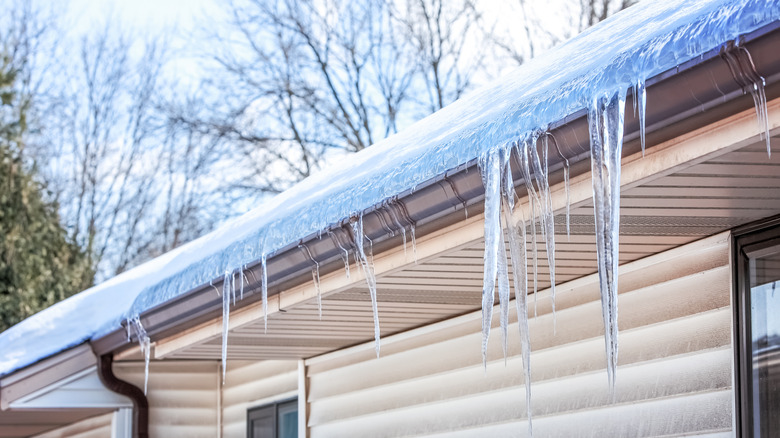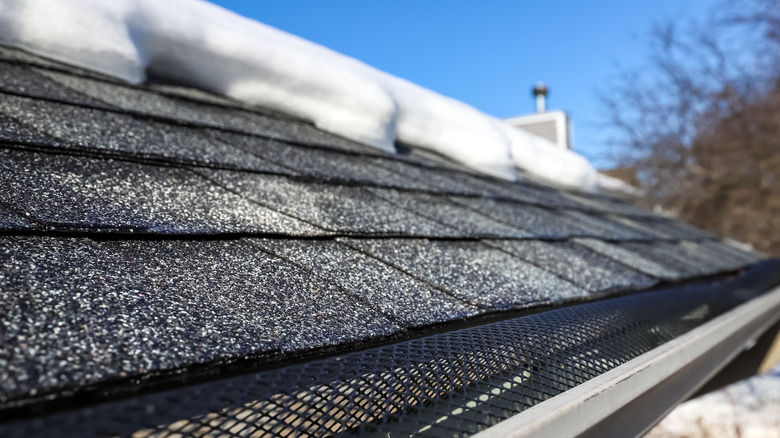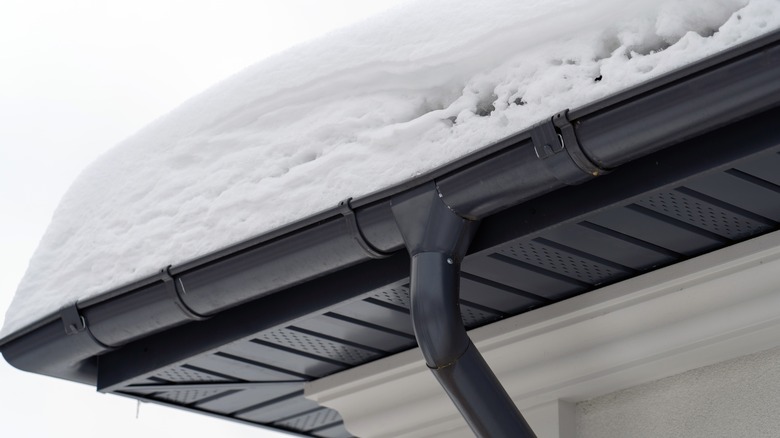Should You Put Heat Tape In Your Gutters For Winter?
During the winter months, it's not uncommon for snow and ice to build up on the roof and gutters of a home, often creating a high risk for structural damage, leaks, and even accidents. This can occur, especially, when gutters are clogged with leaves or other debris, as noted by Midwest Exteriors. Ice dams are a particular concern because the water freezes in the gutters and valleys of the roof, allowing ice to build up under the surface. As the ice grows, it expands, putting pressure on the roof shingles as well as on the gutters themselves, causing damage or even for them to fall.
While you may know cleaning your gutters in the fall is an important type of home maintenance, depending on where you live, that may not be enough to reduce the risk of ice dams occurring. However, one solution often recommended is the use of heat tape. What is it, and is it a necessary investment for your home?
What heat tape does
The biggest problem with gutters in the winter comes from water that collects in them and, as temperatures drop, freezes. This further clogs downspouts and gutters and leads to risks to your foundation and siding over time. Heat tape may be a solution because it works to help minimize the risk of ice forming. According to Ace Gutter, heat tape is a type of cable or cord that runs along the gutters and on the roof. Within the cord are resistive heaters that warm just enough to keep ice from forming, reducing the likelihood that rain or snow will become a chunk of ice in your gutter.
Most heat tape products have a built-in thermostat that controls the heating cycles and temperature. This doesn't produce a high enough level of heat to create a risk of fire or melting, but just enough to keep the water fluid. As electricity passes through the heaters, they warm up just enough to allow this to happen.
Should you invest in heat tape?
There are both pros and cons of using heat tape, according to AHC Gutters & Painting. They work to prevent freezing within the gutters, which can be the ideal solution if you live in an area that's likely to see fluctuations of warming and freezing over the season. Used in this way, they can extend the lifespan of the gutters as well.
At the same time, there are some limitations to these products, and they don't always work. For example, if the area has poor ventilation or bad insulation, this may not be enough to correct the underlying problem causing icicles and dams to form. It may also not be beneficial in situations where there's an excessive amount of snow, as it may make ice formation more likely to happen because the snow works as a type of cold insulation for the moisture, encouraging it to freeze. Like all gutter repairs, it's often best to turn to a professional if you're not sure what's causing your gutters to freeze.


